NETIO PowerPDU 4PS is a smart PDU (Power Distribution Unit) with four power outlets (4x IEC-320 C13). Each output can be switched on/off individually. NETIO PowerPDU 4PS can be mounted in rack cabinets – horizontally, vertically, or as a 1U device. Integration into third-party systems using various protocols (JSON, Modbus/TCP, SNMP, MQTT-flex, Telnet, ...) is easy thanks to the open API. With the NETIO Cloud service, the outputs can be controlled from anywhere. The NETIO Cloud service, provided for a fee, uses SSL security and servers in Europe.
NETIO PowerPDU 4PS can be configured with a web browser (allows output control, connection to NETIO Cloud, Open API communication settings, etc.).
NETIO PowerPDU 4PS does not support electrical measurements. Each output can be individually switched on/off or power-cycled. To switch the outputs on in a sequence, a power-up delay can be configured for each output.
The NETIO Mobile 2 app controls each output individually over LAN (local network) or the NETIO Cloud service.
NETIO Cloud is a TLS-secured service for controlling the outputs from anywhere (Web or Open API).
Open API allows controlling the outputs over the network using various protocols (http XML/JSON, Modbus/TCP, MQTT, SNMP, Telnet and more... ).
AV drivers make it easy to connect NETIO sockets to professional Audio/Video systems such as Neets, CRESTRON, Control4 and more.
Professional product
NETIO PowerPDU 4PS is suitable for industrial applications. The product works in a wide temperature range (–20°C to +65°C), supports firmware upgrades over the web, remembers the last socket states before being powered off, and its relays switch at zero voltage.
A power-on delay can be configured for each output. In this way, the outputs can be switched on in a sequence after a power outage.
Open API: Supported M2M protocols
The open API can use one protocol at a time, chosen from among the supported M2M protocols:
- Modbus/TCP AN27, AN22, AN37
- MQTT-flex AN40
- Telnet AN10
- http URL API AN19, AN29
- JSON over HTTP (default) AN21, AN30, AN42
- http Push JSON
- http Push XML
- XML over HTTP AN20, AN31
- SNMP v1 AN11, AN41
- SNMP v3
The SNMP protocol can be always used in parallel to outher APIs.
Regardless of the Open API used, the PowerPDU 4PS can be always controlled from its web interface and from the NETIO Cloud service. The customer may use one Open API protocol and the NETIO Cloud service simultaneously.
Useful links:
- Application Notes ANxx.
- NETIO Wiki (for programmers): Wiki.netio-products.com
- Download the NETIO Open API descriptions: Download page
Documents to download
|
Video Flyer
|
Flyer PDF | Manual PDF (CE) |
Typical applications
- In IT, the smart PowerPDU 4PS is typically used to distribute electricity in a 19" rack (cabinet) in a data center.
- The connected appliances can be restarted from the web interface (each output can be switched on / off or power-cycled).
- The outputs can be controlled with the Open API (JSON, Modbus/TCP, SNMP, MQTT-flex, Telnet, ...)
- The device can work with various third-party programs and applications (NETIO Drivers).
- The outputs of several NETIO products can be controlled using the NETIO Mobile 2 app (Android & iOS), as long as the app is connected to the same network.
- The outputs of multiple devices can be controlled centrally using the NETIO Cloud service (for a fee).

HTTPs
NETIO PDUs have implemented HTTPs security.
The HTTPs is supported both for the WEB interface and for Open API protocols (JSON, XML). A customer certificate can be used.
NETIO Cloud
![]() The product can be connected to NETIO Cloud. Control hundreds of outputs from a single web screen. NETIO Cloud is an ideal solution for remote control and restarting. The NETIO Cloud service is a paid service.
The product can be connected to NETIO Cloud. Control hundreds of outputs from a single web screen. NETIO Cloud is an ideal solution for remote control and restarting. The NETIO Cloud service is a paid service.
- All devices produced by the NETIO products company can be connected to NETIO Cloud.
- With every added device you receive free "Welcome Credit"
- Devices connected to the service can be controlled securely from anywhere over the Web (HTTPs).
- NETIO Cloud can be used in parallel with another Open API protocol.
- Communication with the Cloud service is secured (port 8883 - MQTTs - TLS)
- NETIO Cloud uses a separate Open API (MQTTS protocol) to control all devices linked to a given user account.
Industrial product quality
NETIO PDUs are made with quality in mind. Each unit includes a set of supporting functions to ensure reliability and long service life of the product in real-life conditions.
- Open M2M API
- Wide operating temperature range (–20°C to +65°C)
- PowerUp state – defined output state after power-up
- PowerUp delay (outputs switched on after a delay)
- Firmware upgradeable over the web, backwards compatibility
- IOC - Independent Output Control
- ZVS – Zero Voltage Switching
An important feature of the NETIO PowerPDU 4PS is ZVS (Zero Voltage Switching).
ZVS controls the exact time when the mechanical relay contacts close and open. The relay contacts switch the output on or off when the voltage crosses the zero level.
- In the long term, ZVS support reduces the product failure rate due to internal relay damage.
- Since the relay switches when the sinusoidal voltage waveform crosses the zero level, negative effects of inrush current are significantly reduced.
- The ZVS and PowerUp delay functions reduce the chance of circuit breakers tripping when power is restored after an outage.
- ZVS extends the lifetime of connected equipment, especially in case of frequent on/off switching of devices that are not designed for that (such as switching power supplies).
For some applications, it is important to set the power socket state immediately after the device is powered on (or the power is restored after a failure). With some machines it is important to avoid momentary switch-on or switch-off. This parameter therefore defines the behavior of the 110/230V output power socket before the standard communication with a master system starts to work.
- On
- Off
- LAST state restores the last state before the power was disconnected
Delay sequence when switching outputs on
After a power outage, some electrical appliances can be switched on with a delay to avoid overloading and tripping circuit breakers. With the PowerPDU 4PS, use these parameters: “Power-Up state” = ON / LAST, and “Output PowerUp interval” = power-up delay before switching that particular output on.
Monitoring of network devices (IP WatchDog function)
Device is equipped with WatchDog PING (IP WatchDog) functionality.
The WatchDog function monitors PING (ICMP) responses on the network. The monitored device (router, IP video camera, …) can be easily restarted without human intervention. The function can be configured over the web interface.
The PING based WatchDog can control any device output.
>> Glossary: WatchDog PING (IP WatchDog)
Scheduler (timed switching of individual outlets)
- Each output can have its own schedule
- When a schedule is active, outputs can still be controlled with NETIO Cloud, the web interface and Open API
- Scheduler functionality can be enabled/disabled (not edited) for each output from the NETIO Mobile 2 app.
- Scheduler does not need an internet connection.
However, a time source is needed – provided over the internet or, for example, by a local ADSL / WiFi router.
- For special usage the Scheduler can be combined with PAB (Power Analyze Blocks):
- Switching time is based on current sunrise/sunset based on your location
- Whatever happend, defined output can be switched off on defined time (midnight for example).
- Ask for more..
>> More information about the Scheduler
PowerPDU 4C / 4PS comparison
NETIO offers two versions, PowerPDU 4C and PowerPDU 4PS.
“PowerPDU” designation (form factor) means that the product is intended for IT environment for installation in a 19” cabinet.
Accessories are available from the manufacturer to mount one 4C / 4PS unit (RM1) or two units side-by-side (RM2) into 1U of space in a 19” rack/cabinet. Other accessories allow mounting the product vertically, to the back, or to the side of the cabinet.

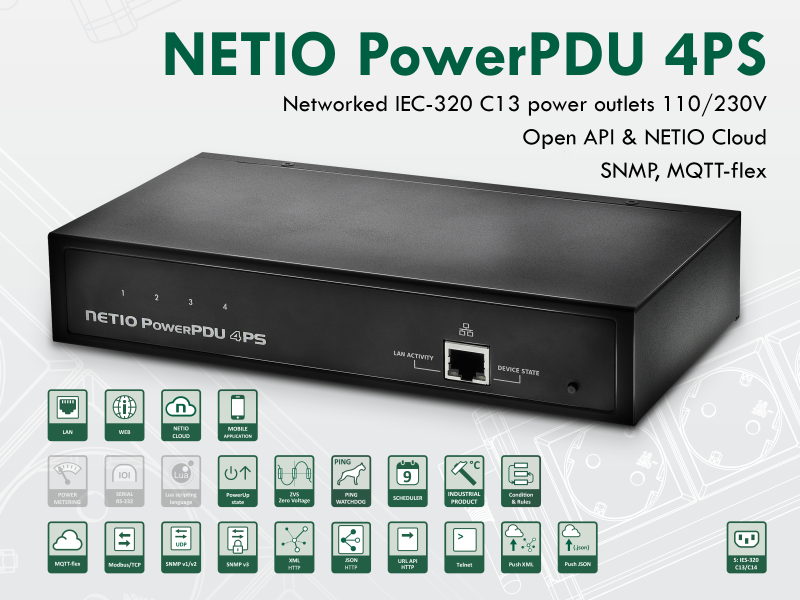
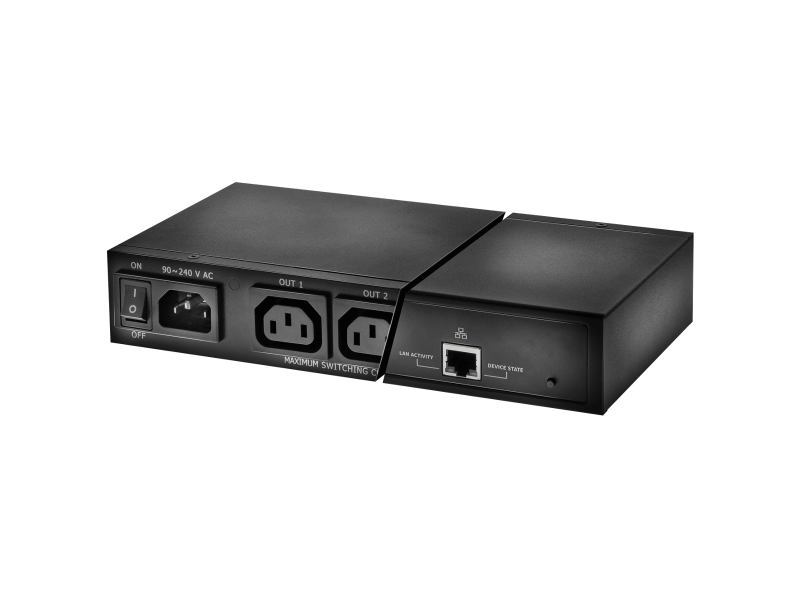
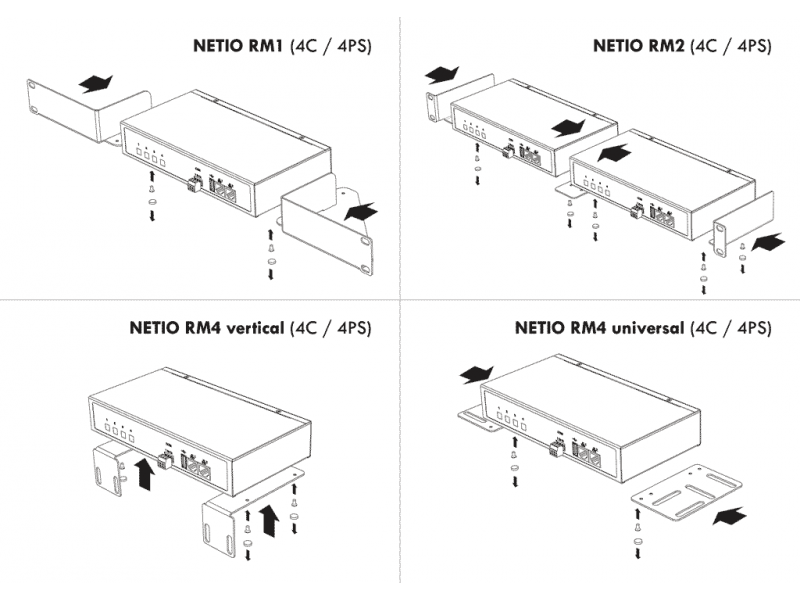
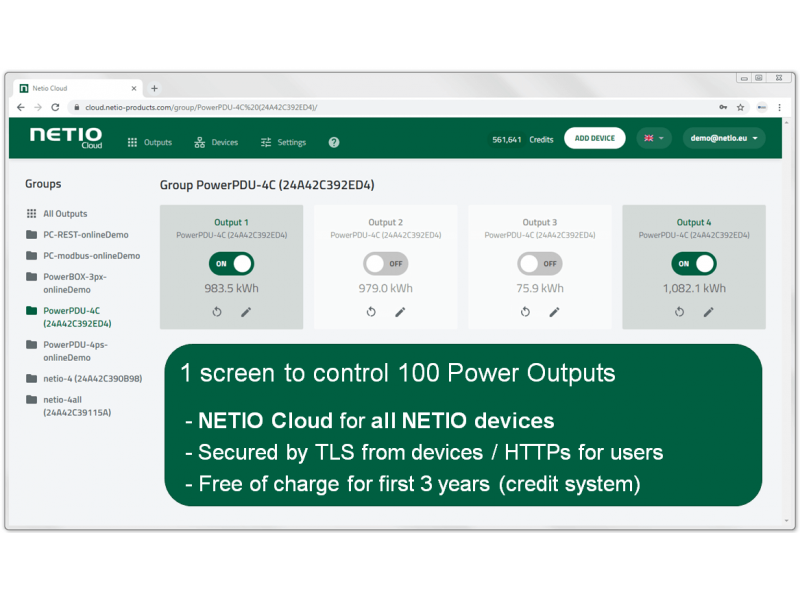
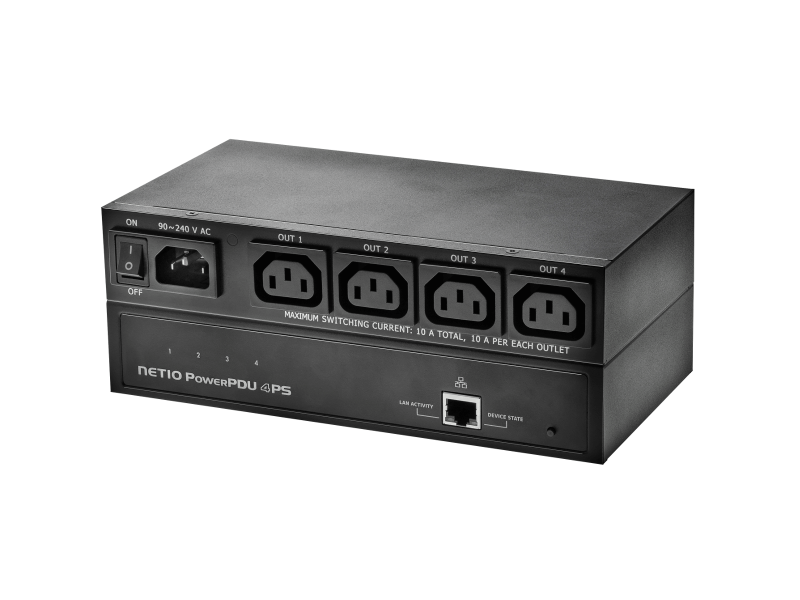
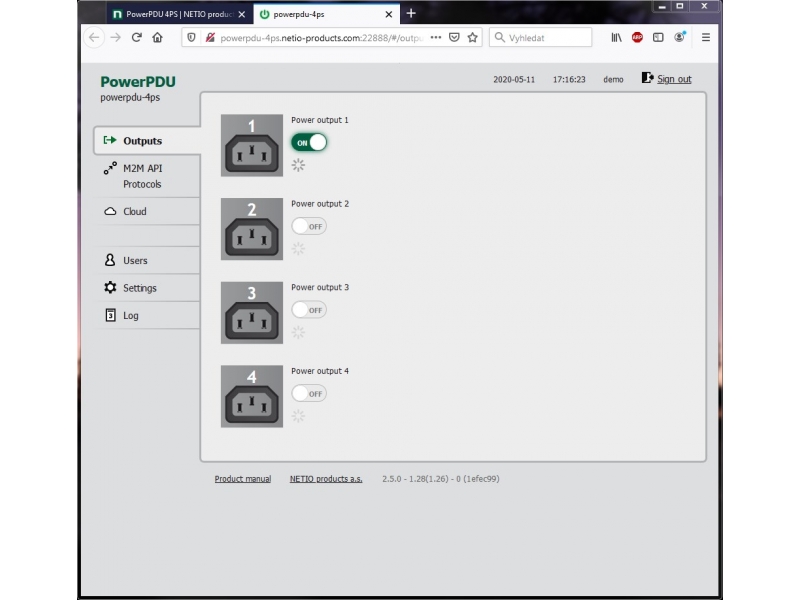
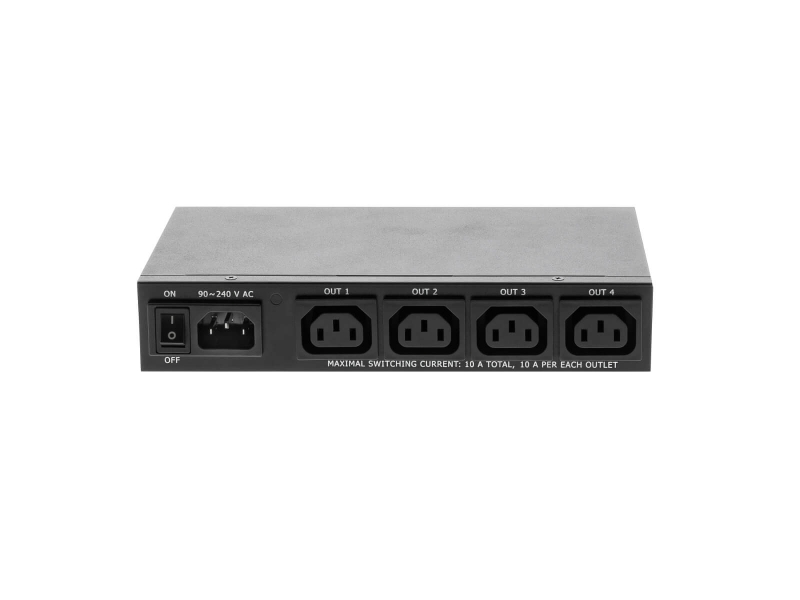
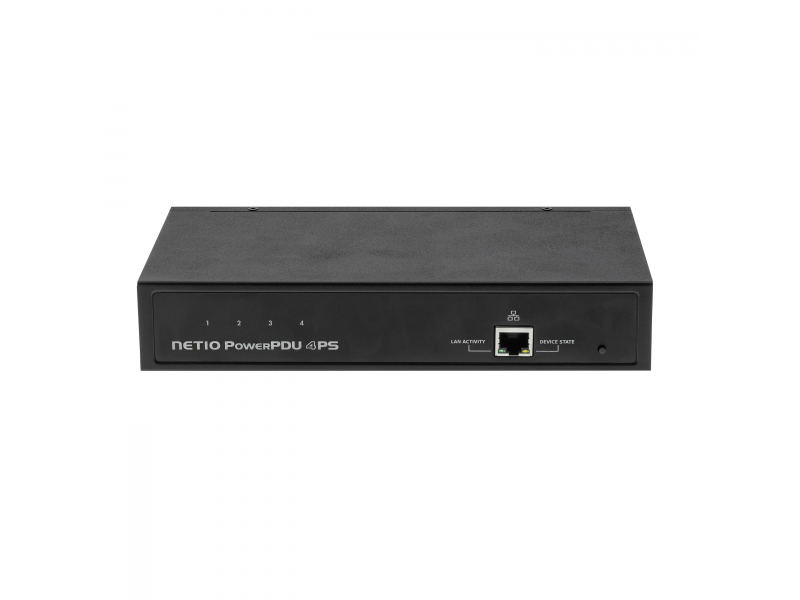
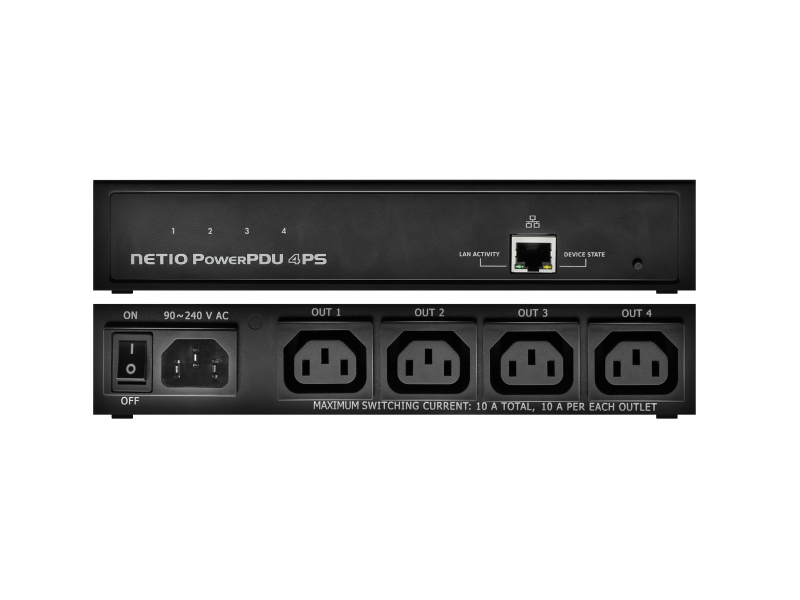
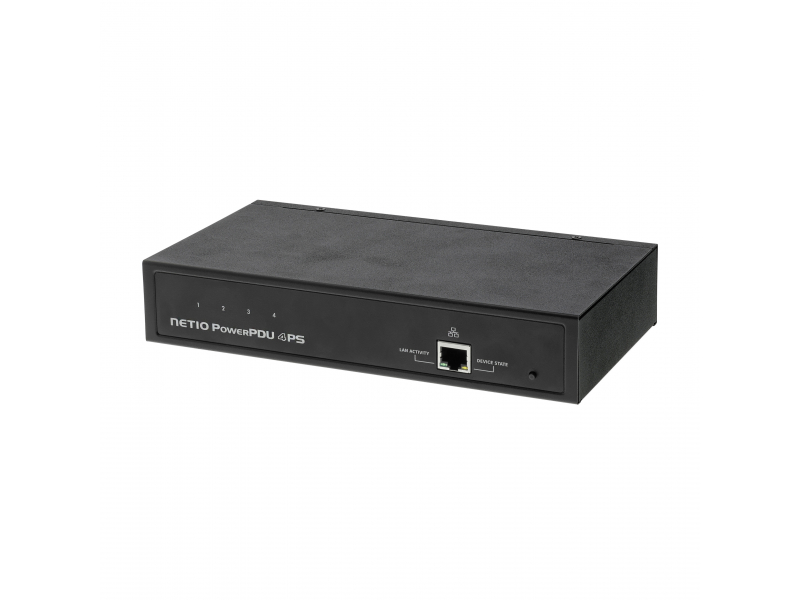
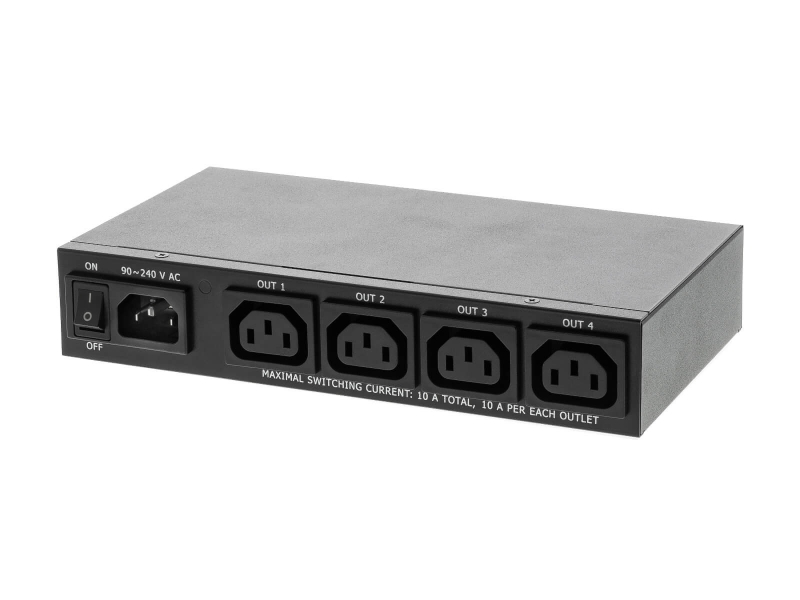
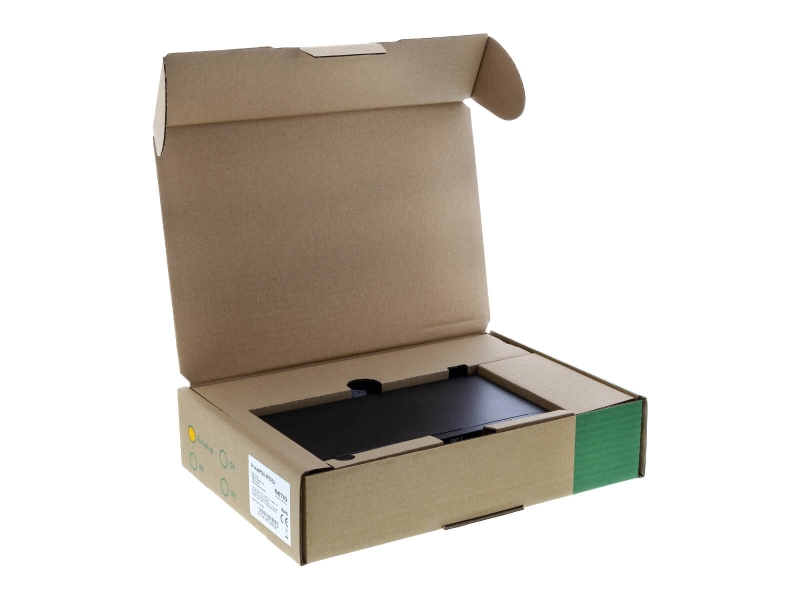
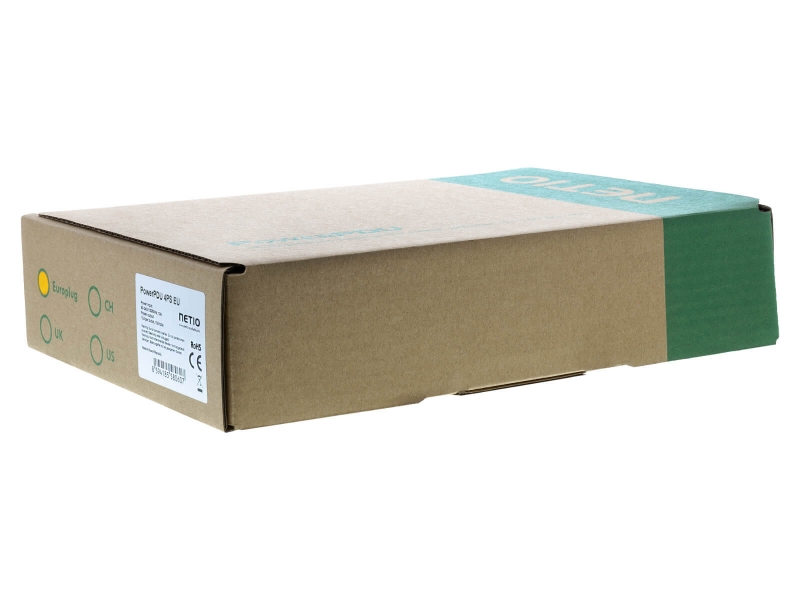
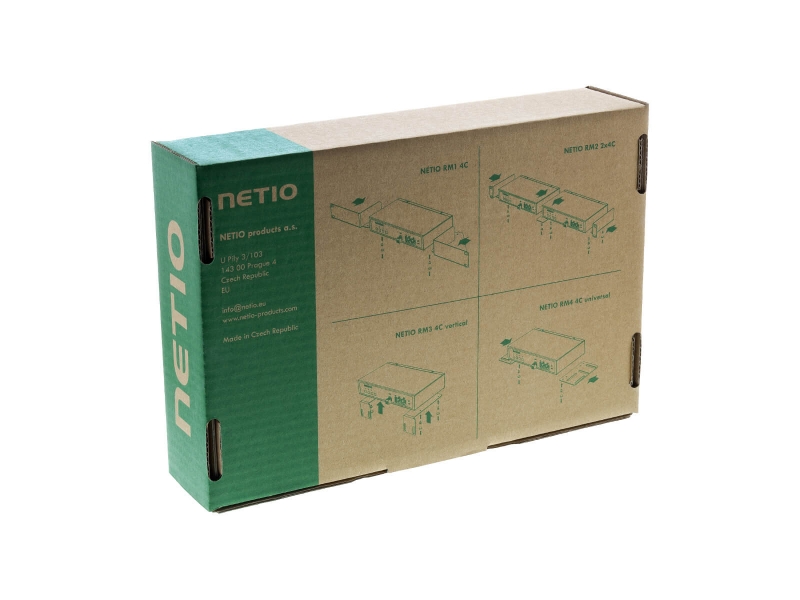
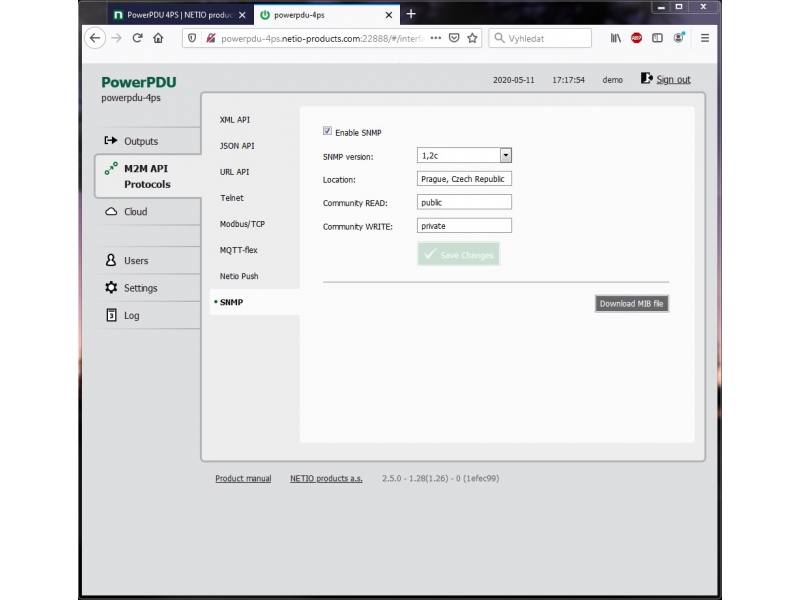
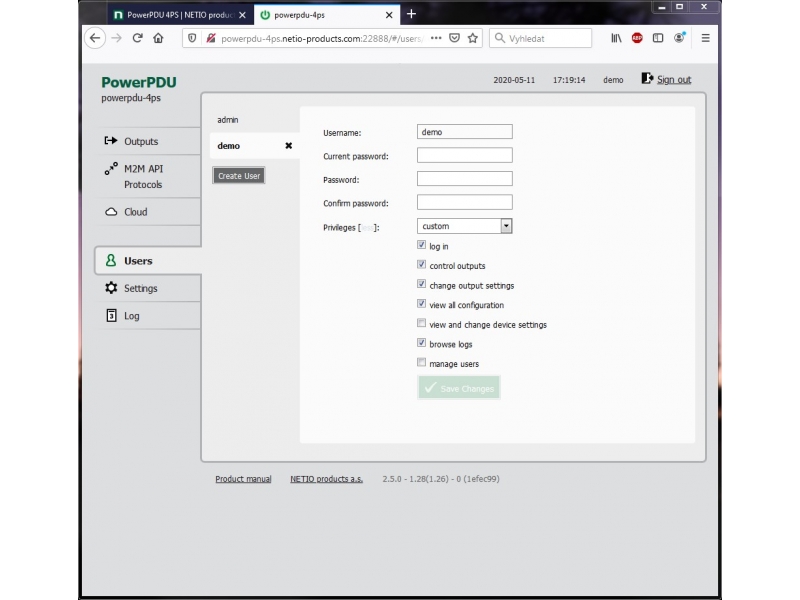
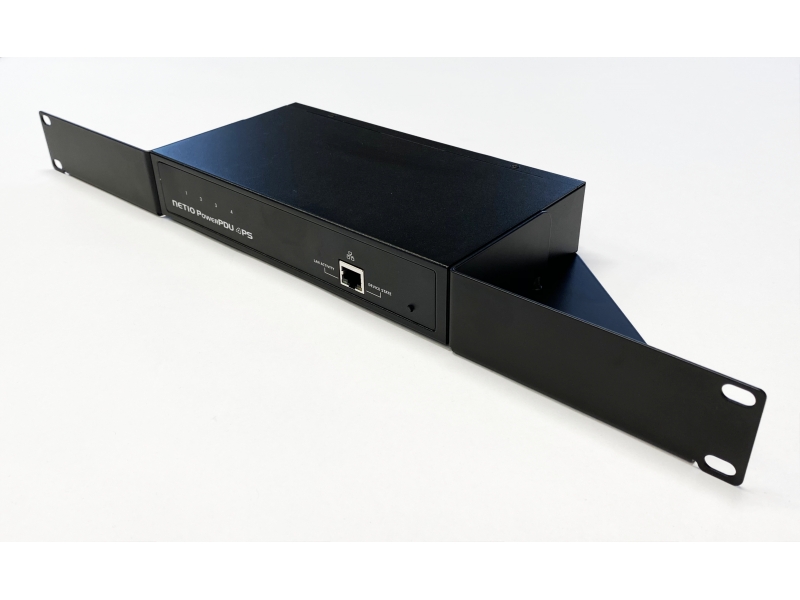
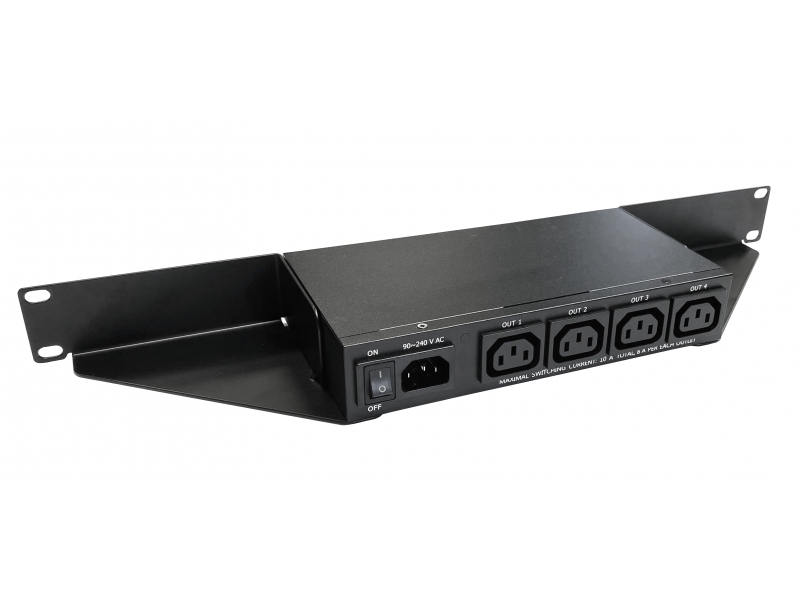
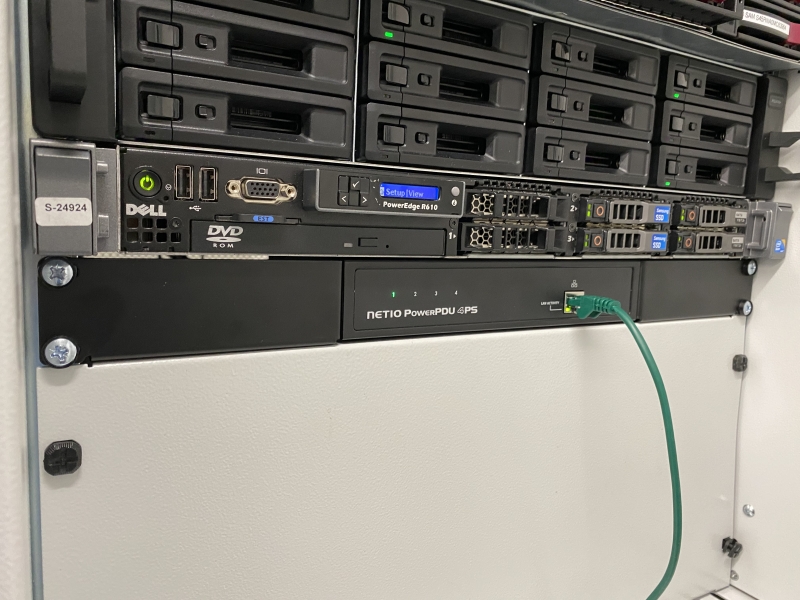
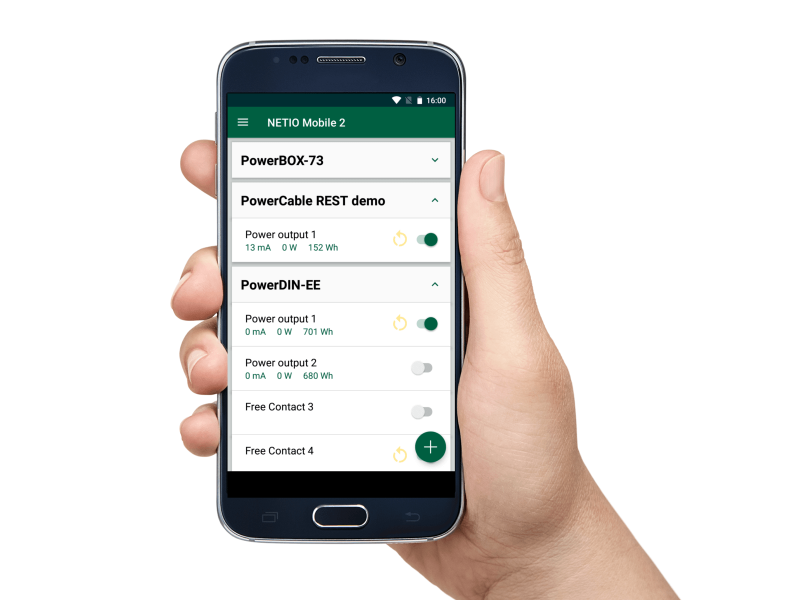
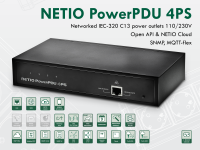
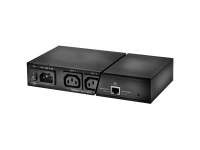
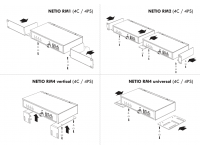
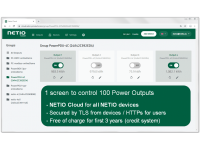
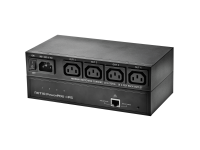
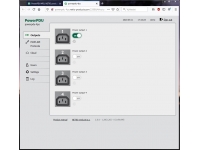
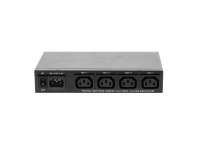
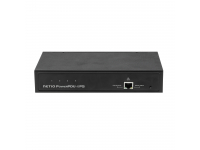
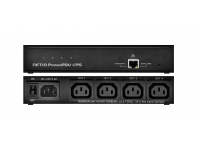
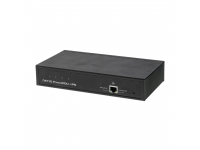
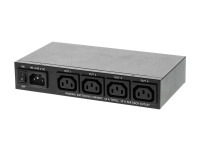
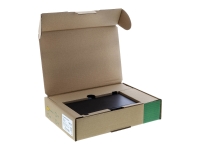
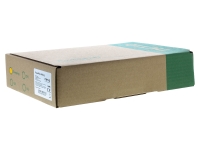
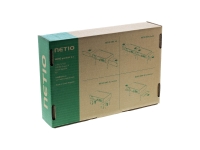
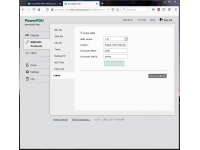
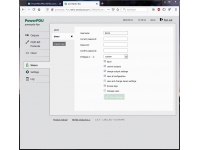
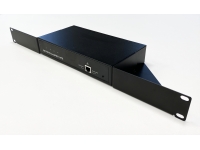
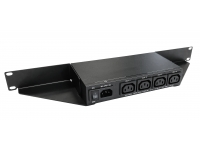
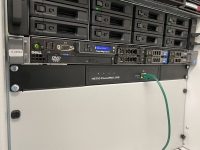
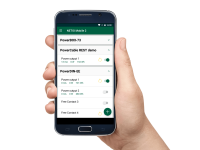


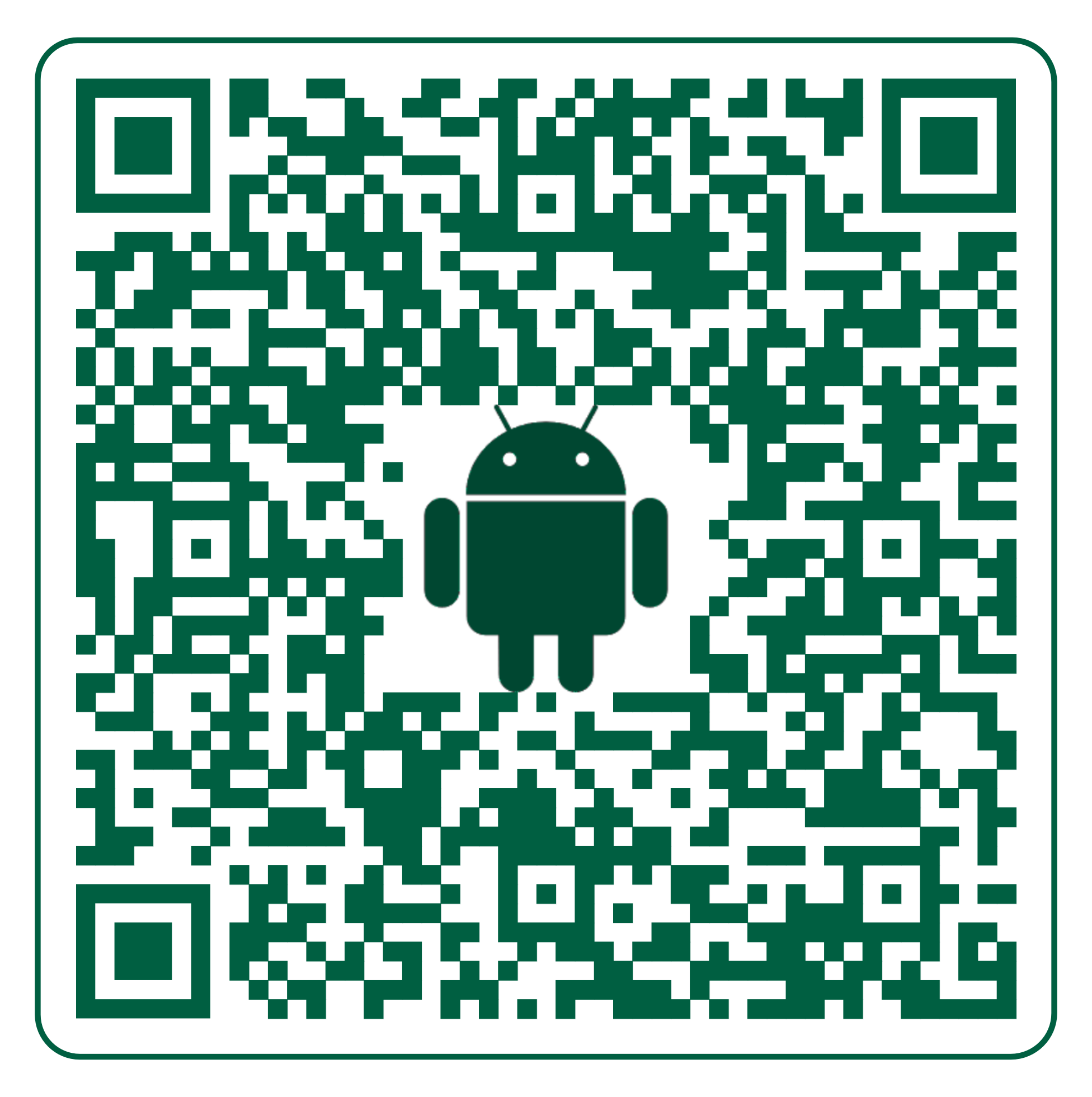

 NETIO PowerPDU 4PS has these certifications to ensure compliance with regulations of your country:
NETIO PowerPDU 4PS has these certifications to ensure compliance with regulations of your country:



